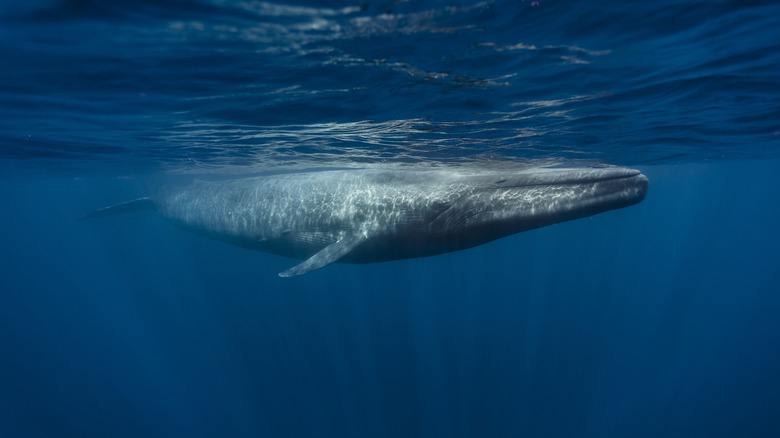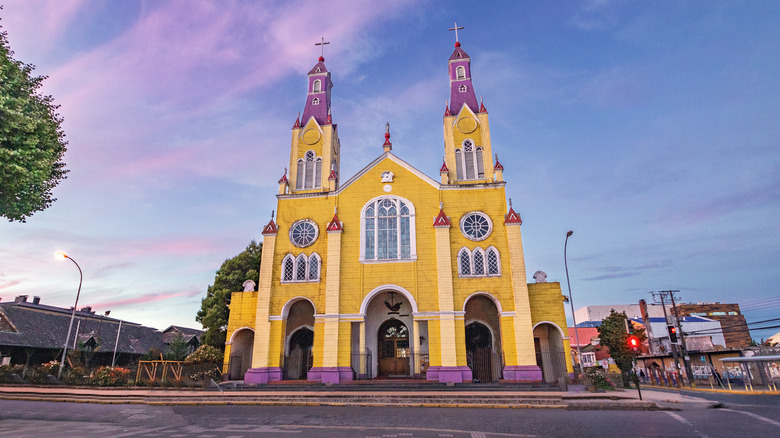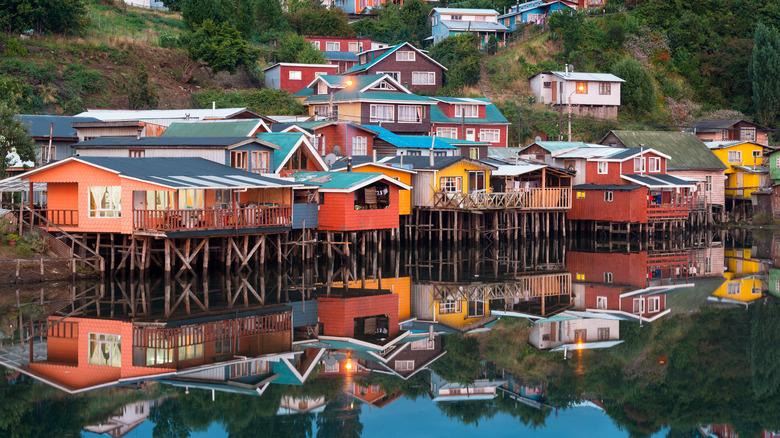It’s no secret that South America is rich in biodiversity and unique ecosystems, offering some of the most remarkable wildlife-spotting opportunities in the world. From the dense Amazon rainforest – home to jaguars, capybaras, and countless bird species — to the Andean mountain range that shelters condors and llamas, the continent is a haven for wildlife enthusiasts. Between the steamy Amazon basin and the rugged, windswept tip of Patagonia, a typically slept-on South American destination beckons adventurous travelers. Chiloé Island is perfect for those looking to explore untouched landscapes, dive into a rich cultural tradition, and come face to face with some of the most incredible marine wildlife.
Located off the coast of southern Chile (764 miles south of Santiago), this bucket-list-worthy island is well known for its picturesque landscape, colorful stilt houses (or palafitos), and mouthwatering seafood. However, what happens beneath the surface will truly capture your attention. Between January and April — and reaching its peak in February, considered summer in the Southern Hemisphere — a group of about 700 migrating blue whales makes its way through the surrounding waters of the Pacific Ocean. This move is in search of food and shelter for their young in a spectacle that’s truly worth the journey to the tip of the Earth.
Exploring the best of Chiloé

Catching a glimpse of the whales isn’t always guaranteed — even during so-called peak season. However, there are different things you can try. For starters, various local companies run ethical and responsible whale-watching tours that take visitors to the whales in their natural habitat. Quilun Ecoturismo Marino, for example, which has been operating since 2010, focuses on conservation efforts and protecting Chiloé’s marine and coastal biodiversity. Its whale-watching tour runs between April and June and costs around $52, lasting 4.5 hours. It will take you around the Gulf of Corcovado to see different species of whales, including humpback whales, blue whales, fin whales, and sei whales, from a respectful distance.
Then, you’ve got Tantauco Park. Covering over 290,00 acres, the park is well known for its natural beauty. It’s also the perfect starting point for a kayaking trip along the Gulf of Corcovado, where migrating whales typically gather. Once you’ve reached the park — located on what’s considered the northernmost tip of Chilean Patagonia — you’ll need to head over to Chaiguata Lake to rent your kayak for $15. Keep in mind, however, that the drive to Chaiguata Lake can take up to three hours from Quellón, the nearest town, so you’ll want to plan accordingly or consider booking accommodation inside the park. This starts from $95 for a small room or $20 for a camping site.
Connecting with local Chiloé culture

Outside the whale-watching season, Chiloé still looks like it was taken straight out of a painting. With rolling hills, a rugged coastline, and buzzing with wildlife, the island remains a captivating destination no matter when you visit or what you choose to do. First, you’ve got the colorful churches — 16 of which have been officially declared World Heritage Sites by UNESCO. Made primarily from wood, the structures date back to the 17th and 18th centuries and represent Chiloé’s cultural legacy. To check these out, head to Isla Grande, Lemuy, Quinchao, Cahuach, and Chelín — spread out around a 6-mile radius — for a day of sightseeing. Along with these, make sure you also check out the island’s palafitos, which are typically located along the waterfront.
As for getting to Chiloé, there are different ways to make the journey. Traveling from Santiago, you can fly directly into Chiloé and land at Mocopulli Airport in Castro. Ferries are also available from Pargua — on the mainland — into Chacao. The price for the 30-minute trip is about $16 and includes transporting your car across the stretch. Once in Chiloé, you can find lodging accommodations suited to all budgets. From the luxurious Tierra Chiloé — with rooms starting from $2,000 a night — to the uber-affordable 13 Lunas Hostel — where sleeping in a dorm will set you back about $20 a night — you’ll be spoiled for choice.

